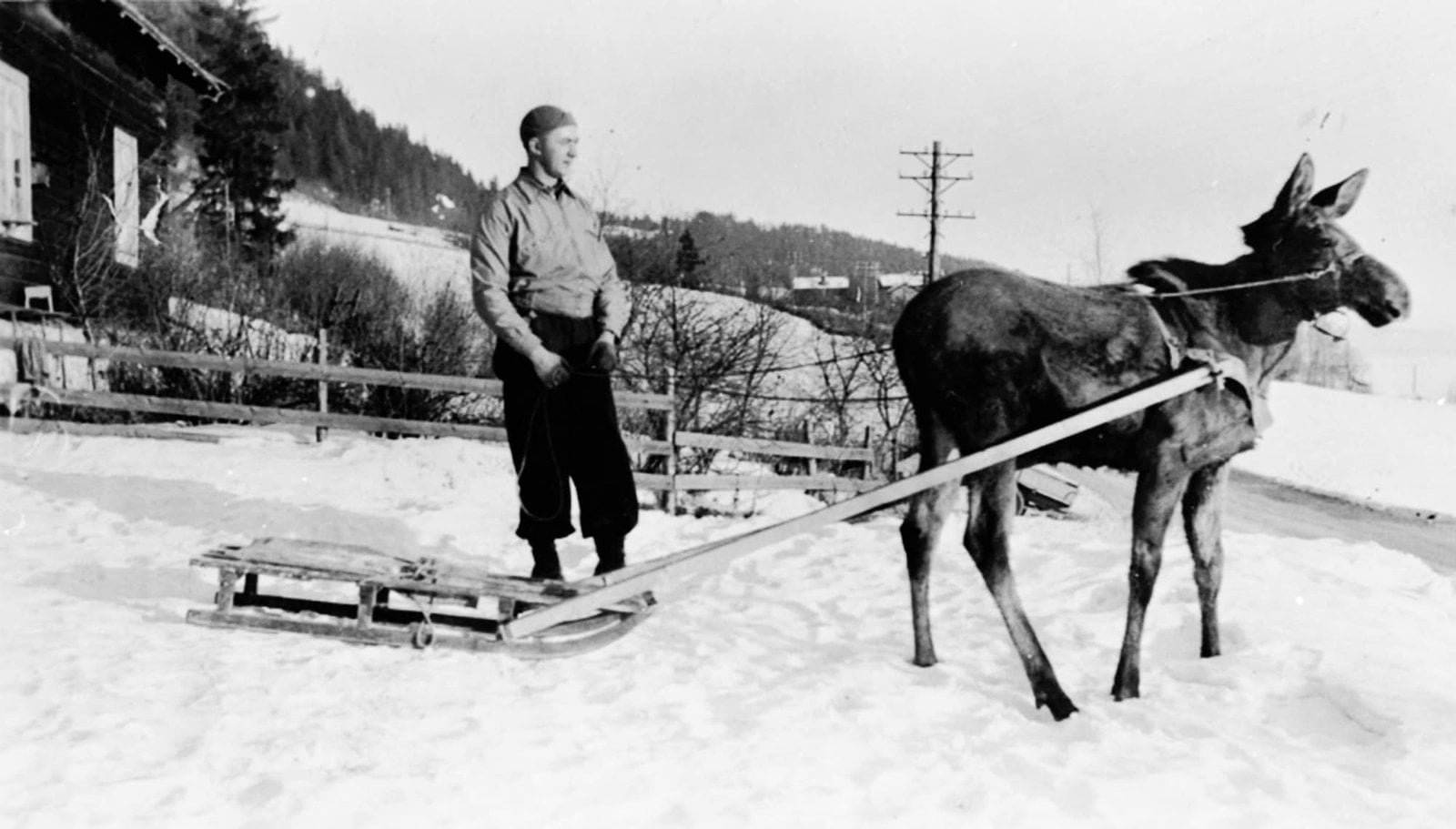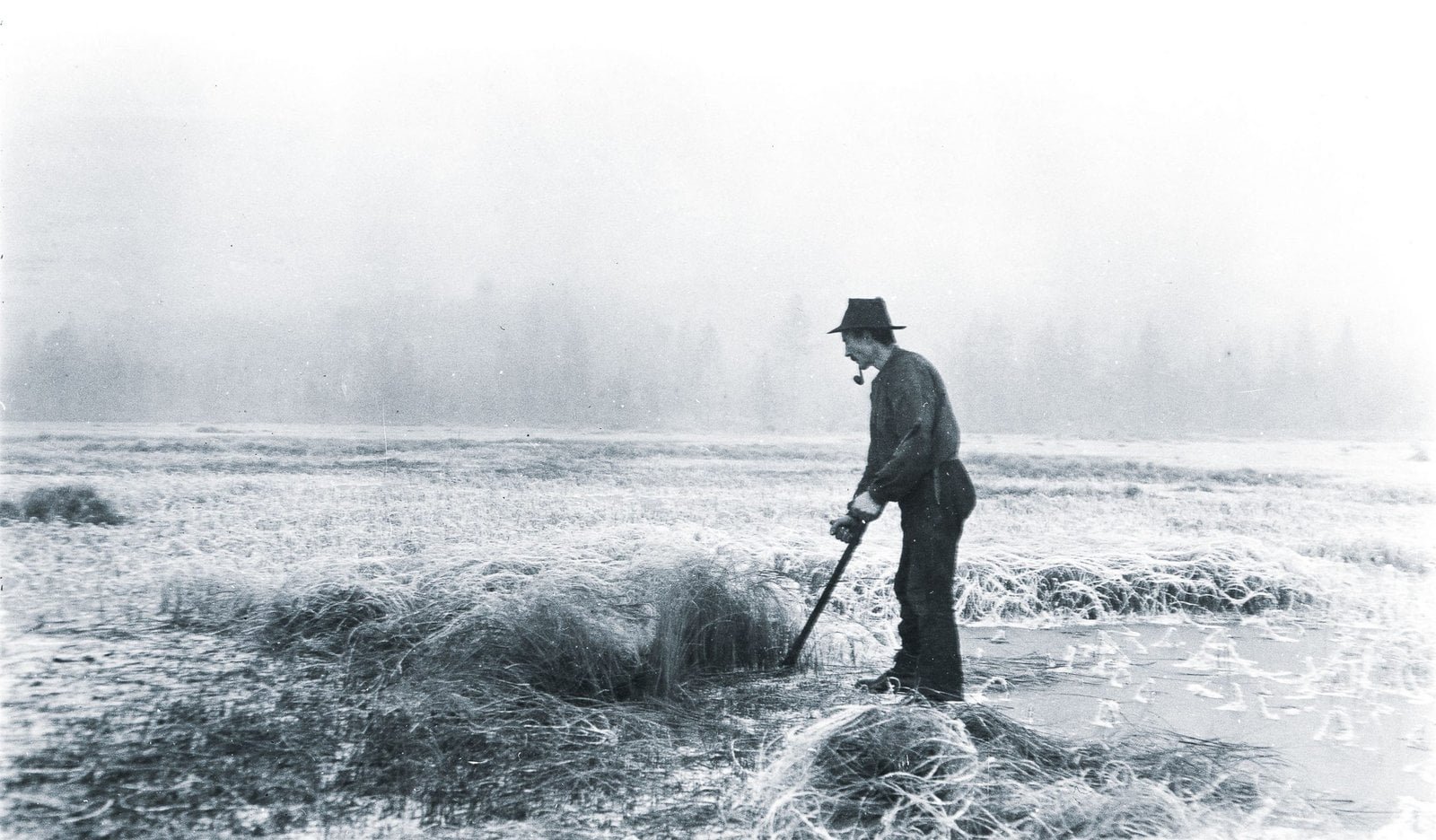In his writings on Sami history, Yngve Ryd retells this fascinating Sami historical observation, shared by Ola Omma.
The mountain willow
When sleeping under the open sky, an ancient Sami method to keep warm during particularly frosty nights was to sleep on a bed of hot, glowing embers. However, this was not an undertaking without danger.
For this particular purpose, only fresh vier would do as fuel. Vier is a type of mountain willow, a woody shrub. Old Sami wisdom says that glowing embers from freshly cut willow stay evenly warm for an entire night and a whole day.
When the time came to rest, the hunters looked for a large willow thicket – called a råhto in the Lule Sami language. Towards the centre of the thicket, they cut away enough willow to create a sufficiently large sleeping spot – but no more. At its core, the willow thicket can be as tall as a man. The remaining shrub wall gave protection from the wind.
The initial big fire – and the subsequent bed of glowing embers – required a large quantity of thick willow branches – and took more than a couple of hours to prepare. The end result had to be an evenly spread 15 centimetres tall layer of glowing embers – covering the entire width and length of the sleeping area.
When the fire started burning out, fine ash was created, covering and protecting the glowing embers. It was essential to leave the cover of ash intact – and not to poke around with a stick as the fire was dying down.
A mattress of twigs
The next step of the process was to cover the ember bed with an ample three-layer thick mattress of fresh, slim, and straight willow twigs – the twigs being about 25-30 centimetres long.
It was crucial that the twigs were freshly cut and not dry – and they had to be prepared in advance and be ready to be spread out across the whole hot ember area immediately and in one go. If adding the twigs slowly and in sections only, air and wind could easily lead to flames flaring up and to the twigs catching fire.
The twigs had to be gently laid down so as not to disturb the ash – with all the twigs pointing in the same direction – and with the longer side facing the wind. The layer of fresh twigs had to be particularly thick around the sides – and stretched a bit outside the edge of the bed of embers – interwoven and dense, so that the wind did not get access. The twig mattress had to be as windproof as possible. The concept was to get the underlying embers to glow throughout the night, without too much oxygen finding its way in – based on the same principle as a charcoal kiln or pile – a kullmile.
A good night’s sleep
When the bed with its mattress was ready, a reindeer skin was often put on top. The skin didn’t cover the full length of the body – but at least the back area of the person sleeping. The knapsack was the pillow – and an extra piece of clothing, a blanket, or a second skin was the top cover.
It was important to sleep on one’s back, with the face pointing out into the open air; toxic fumes from the embers could otherwise pose a risk.
The old Sami hunters often had a dog with them, tied to either their leg or around their chest. Should the willow twigs catch fire during the night, the dog would likely wake its owner when trying to get away.
Preparing a bed of embers was hard work – but it gave a pleasant and warm night’s sleep – under the mighty sky – in the freezing Nordic winter.
Warning! Sleeping on glowing embers can be highly dangerous and is not for the inexperienced.
Source: Ryd, Yngve. Bål – samisk ildkunst. Dreyers Forlag 2018. | EGP.00092











